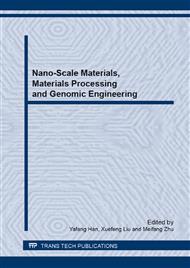p.355
p.362
p.370
p.377
p.384
p.391
p.396
p.403
p.409
Microstructure and Mechanical Properties of Brazed Tungsten/Steel Joint for Divertor Applications
Abstract:
Due to its excellent thermophysical properties, tungsten has been used as structural materials for divertor components of fusion reactors. With the development of technology, the helium cooled high performance divertor requires the high reliable joining between tungsten and ferritic martensitic high chromium steel. However, the difference of thermal expansion coefficients between tungsten and steel causes high thermally residual stresses, which will yield failure of the joint. Therefore, the preparation of the joint between tungsten and steel is a key issue for divertor application. A brazing process, using rapidly solidified Ni-based foil-type filler and a vanadium slice as intermediate materials, was developed to investigate the joining of tungsten and steel for divertor components, and the microstructure and mechanical properties of the joint were also studied. The elements and phases compositions in the boning regions were analyzed by electron probe microanalysis and X-ray diffraction. Micro-hardness distribution and tensile strength of joint were measured by nanoindenter and mechanical testing machine, respectively. The results indicated that the integral bonding was achieved at the bonding regions of the brazed joint. The typical microstructure of the joint was consisted of W/V and V/steel brazed seams separated by a V slice. The hard and brittle vanadium borides with 25 GPa hardness were produced at the W/V and V/steel brazed seams. The as-bonded W/steel joint with tensile strength of 143MPa was obtained, and specimens appeared a brittle fracture mode and fractured in the brittle vanadium boride layers during tensile testing.
Info:
Periodical:
Pages:
384-390
Citation:
Online since:
April 2014
Authors:
Keywords:
Price:
Сopyright:
© 2014 Trans Tech Publications Ltd. All Rights Reserved
Share:
Citation:


